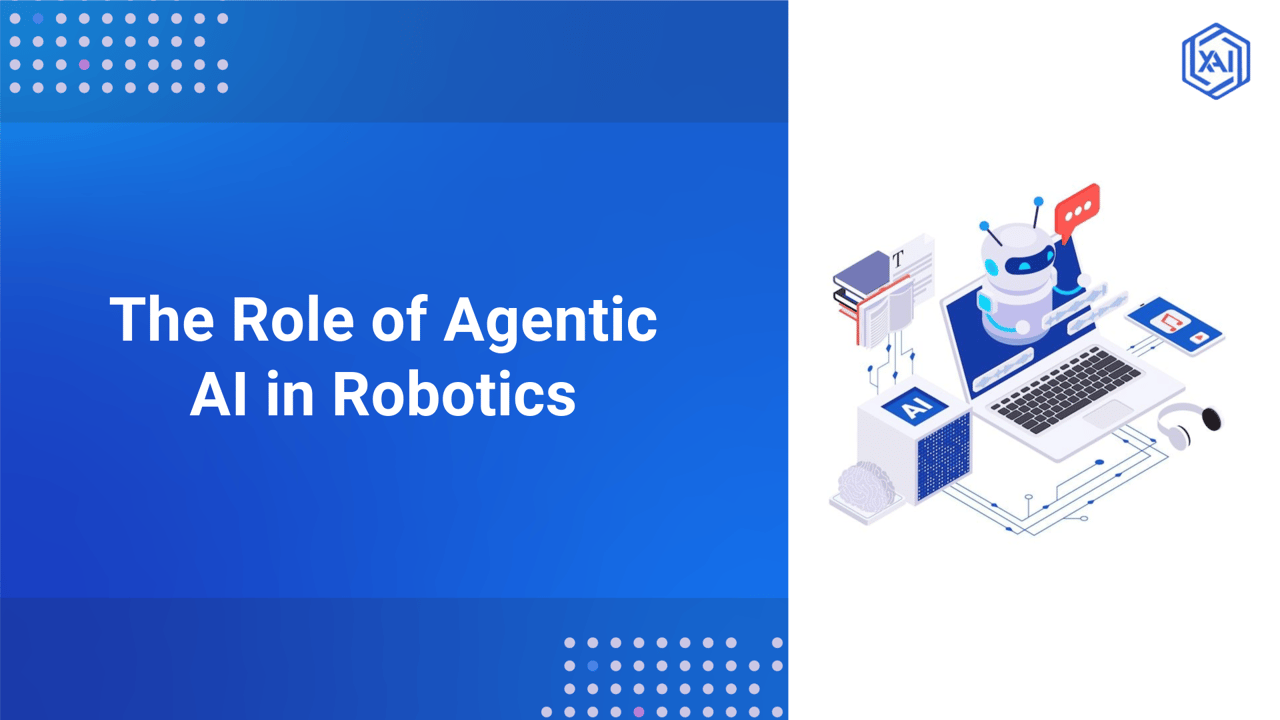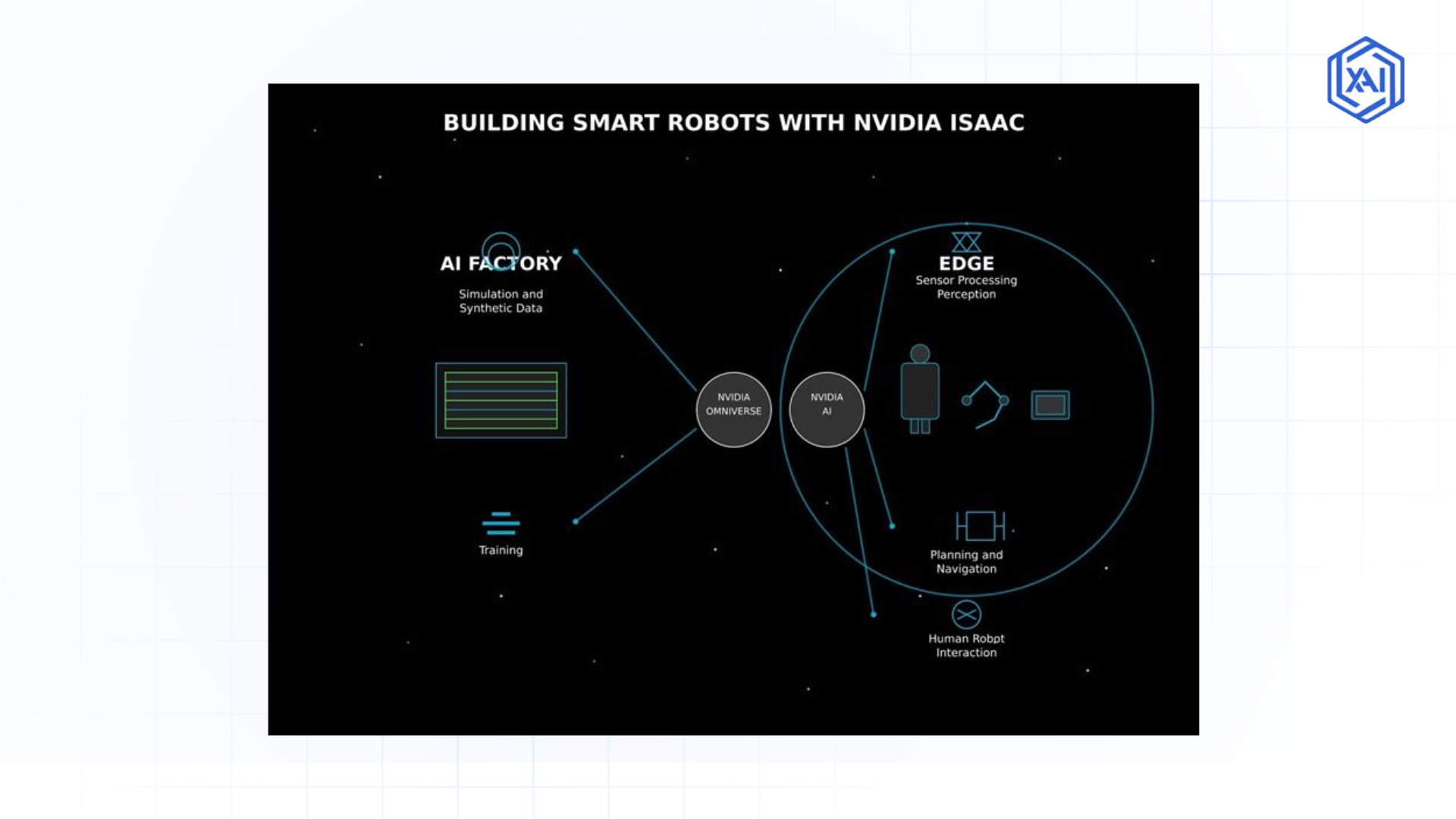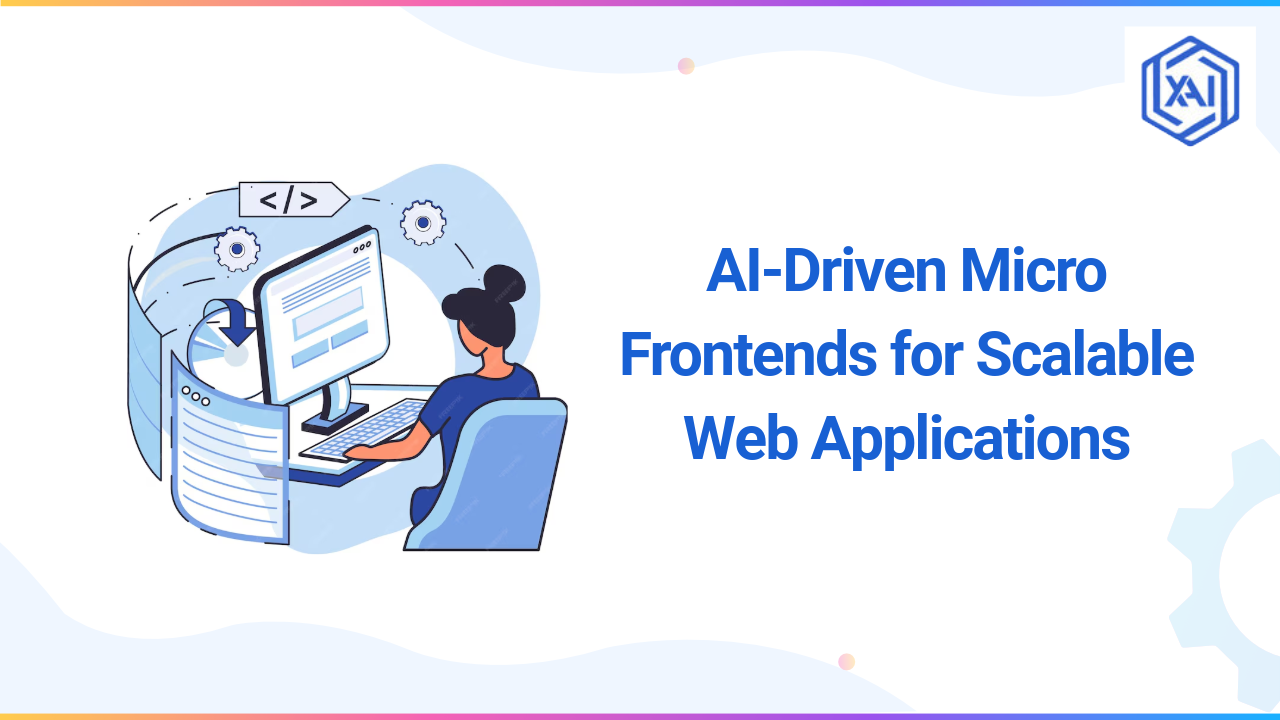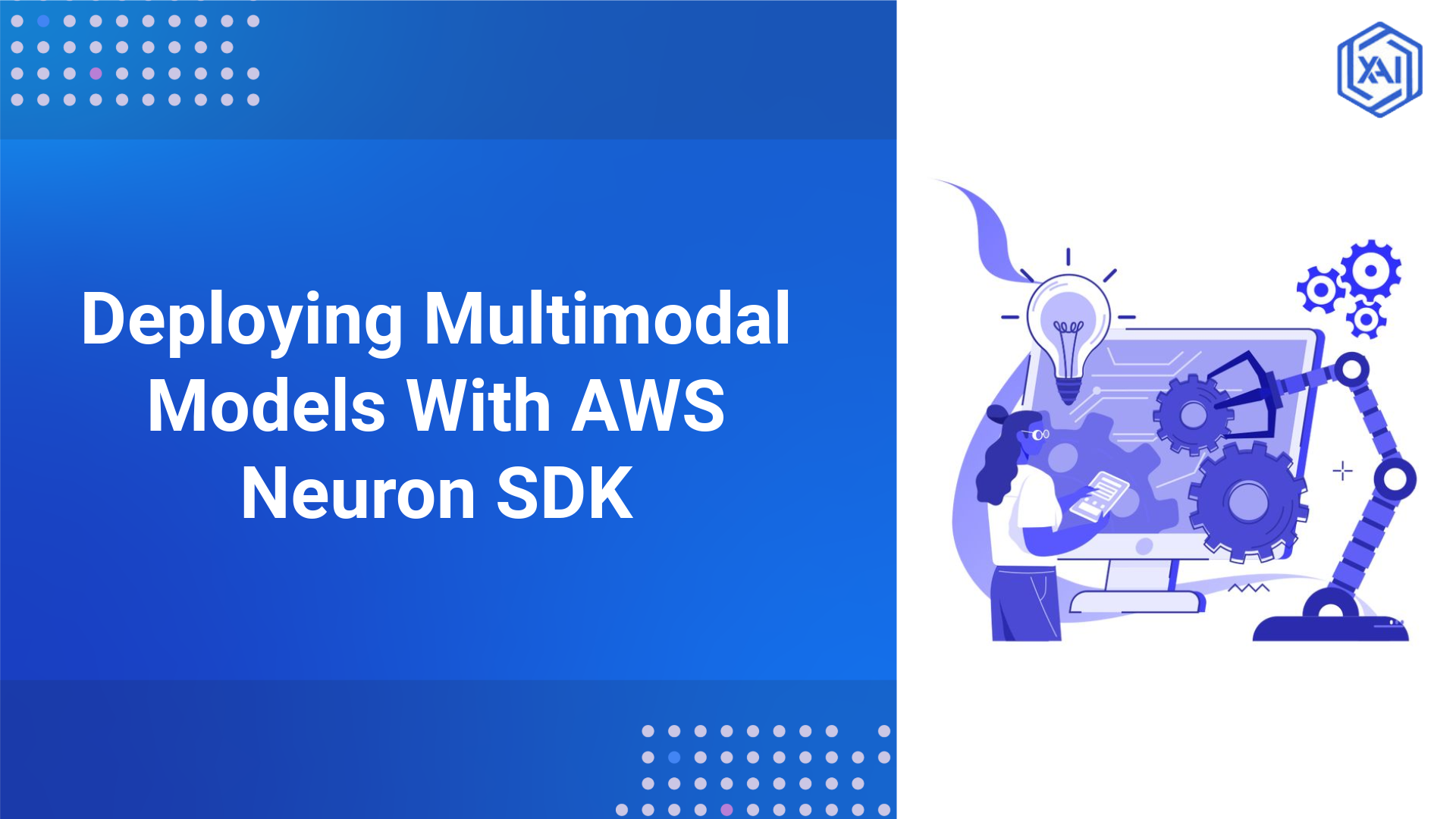
Agentic AI is revolutionizing robotics by enabling machines to perceive, reason, and act on their own without constant human input, converting capabilities from scripted to adaptive intelligence. The collaborative efforts are creating a unified ecosystem of simulation environments, digital twins, and physical robot platforms closing the virtual training and real-world deployment gap.
Beyond robotics, Agentic AI in the Education Industry is transforming personalized learning experiences, allowing AI-driven tutors to adapt dynamically to student needs. Similarly, Agentic AI in Energy is optimizing grid management and predictive maintenance, ensuring efficient and autonomous decision-making in power distribution.
While much remains to be done in bridging the sim-to-real gap, computational complexity, and ethics, agentic AI is the future of intelligent robotics that can act effectively and safely in collaboration with humans in dynamic environments.
Agentic AI in Energy Sector is revolutionizing grid management, predictive maintenance, and autonomous decision-making for efficiency and sustainability. Explore how AI-driven intelligence is shaping the future of energy systems in the full blog.
What is Agentic AI and Its Role in Robotics?
Agentic AI are not just data processing machines; they independently perceive their environments, reason out complex scenarios, and make choices without human intervention. While generative AI excels at creating new content, agentic AI empowers robotics with autonomy and adaptability, enabling real-world applications across industries like software development, manufacturing, and autonomous systems.
-
Digital Perception and Reasoning: Robots are using advanced deep learning and reinforcement learning models that are sophisticated for perceiving and dynamically adapting actions based on sensor inputs. NVIDIA's Isaac platform, for instance, uses GPU-accelerated models for real-time inference as well as adaptive control.
-
From Virtual to Physical: By integrating simulation environments like NVIDIA Cosmos with real-world robotics frameworks, developers can train AI agents in high-fidelity digital twins and deploy them into physical systems. This is a critical step in bridging the “sim-to-real” gap, ensuring robust performance in dynamic conditions.
-
Collaborative Ecosystem: The cooperation with Alphabet and Google demonstrates a mutual vision for agentic AI. For Jensen Huang (NVIDIA) and Sundar Pichai (Google), the vision is industry-wide democratization of AI tools and the creation of smart, autonomous machines.
Current Advancements in Agentic Generative AI for Robotics
Agentic Robot Design and Autonomous Learning
Generative AI is rapidly evolving into an agentic force in robotics, empowering systems to operate with greater autonomy. In this new paradigm, manufacturing and automotive leaders such as Tesla and BMW utilizing agentic framework to drive rapid simulation and iterative prototype design—allowing robots to not only optimize their structural integrity and efficiency but also to self-improve through autonomous learning cycles. This agentic approach minimizes human intervention while reducing prototype production costs and accelerating innovation.
Task Optimization and Agentic Decision-Making
In the era of agentic AI, robots are endowed with the capacity to autonomously analyze real-time data and adjust their operational strategies on the fly. Within warehousing and logistics, these systems use predictive models and self-monitoring diagnostics to dynamically reconfigure their task pathways. This means that robots can proactively modify their cargo distribution strategies and self-initiate maintenance checks, significantly reducing downtime and ensuring optimal performance in unpredictable environments.
Fostering Autonomous Creativity in Robotic Systems
Agentic AI is not only about efficiency—it’s about fostering a form of digital “imagination.” Modern robotic systems are increasingly designed to explore creative solutions autonomously. By harnessing agentic capabilities, these systems can generate innovative design ideas and reconfigure work processes without direct human input. Whether through proposing novel material handling methods or rethinking assembly line strategies, agentic AI empowers robots to tackle complex challenges with inventive approaches.
Advanced Problem-Solving and Autonomous Strategy Refinement
Combining comprehensive data analytics with the iterative strength of generative models, agentic AI enables robots to autonomously navigate complex environments and optimize manufacturing processes. These systems are designed to continuously simulate, predict, and refine their strategies—whether determining the optimal configuration for a production line or maneuvering through intricate terrains. The result is an ever-evolving, self-improving agent that adapts its decision-making processes to maintain peak operational efficiency.
Agentic AI in Computer Vision is enhancing real-time object detection, automation, and intelligent perception systems. Discover its transformative role in security, robotics, and industrial applications in the full blog.
How Nvidia and Industries Are Using AI in Robotics
Industrial leaders have started deploying agentic AI systems for enhancing robotic operational limits.
Nvidia Isaac and Cosmos
Nvidia positions itself in the lead through Isaac together with Cosmos which enables the simulation of different realistic scenarios. Cosmos creates artificial training information through its capability to mimic actual-life environments in virtual scenes. Robots gain the ability to learn sophisticated procedures including automated driving and factory manufacturing operations in a secure and accelerated manner with this method.
 Fig 1: Nvidia ecosystem for Robotic Training
Fig 1: Nvidia ecosystem for Robotic TrainingOmniverse Integration
The AI tools of Omniverse platform integrate with Nvidia's platform to enable cooperative simulations between different groups. Engineers have the ability to check algorithm performance virtually ahead of deploying robots in real environments.
Other Key Players
Boston Dynamics
Boston Dynamics applies artificial intelligence to boost mobility functions and autonomous control of its robot systems. Advanced machine learning technology enables their systems to improve robot locomotion as well as running motions and object handling capabilities during unstable situations in various environments.
Amazon and Waymo
Amazon employs robots and Waymo utilizes AI systems to develop autonomous vehicles that improve transportation safety while Amazon uses robots to manage their warehouses effectively.
Innovative Startups
Numerous startups around the globe are applying generative AI for everything from robotic art to personalized healthcare solutions. These companies often collaborate with academic institutions and technology giants to refine their approaches.
Key Challenges in Integrating Agentic AI with Robotics
Integrating agentic AI into robotics is not without its technical challenges. One major hurdle is the “sim-to-real” gap—the difficulty of ensuring that a robot trained in a virtual environment performs reliably in the real world. Bridging this gap requires high-fidelity simulations, massive datasets, and robust learning algorithms that can account for the nuances of physical interactions.

-
Data Volume and Quality: To achieve high performance, one requires substantial datasets containing diverse content which needs to maintain high quality standards. Acquiring such data along with real-world sensor data proves to be very expensive and time-consuming.
-
Computational Complexity: Training these models involves intensive computation, often necessitating specialized hardware (like GPUs) and cloud-based solutions to process data in real time.
-
Integration Issues: Merging sophisticated AI algorithms with existing robotic hardware can be complex. A major technical hurdle exists in making sure the software functions smoothly to control physical elements because of reduced performance issues.
Addressing these challenges is critical for ensuring that these AI-driven robots are not only intelligent but also reliable in everyday applications. Ongoing research and development are focused on creating more efficient algorithms and improving the fidelity of simulations to better mirror real-world conditions.
Ethical Concerns: Bias, Safety in Agentic AI Robotics
Ethical concerns also loom large. Advancements in robotic intelligence and autonomy create new challenges regarding employment loss and responsibility together with information transparency in choosing decisions. Society needs to determine both the liability responsibility of robots during mistakes and precise methods for developing AI technologies that serve every social stratum.
To address misinformation and misattribution issues, the partners are adopting Google DeepMind's SynthID technology:
-
Digital Watermarking: SynthID places digital watermarks within AI-generated images, audio, text, or video. This feature helps in authenticating the integrity and validity of Cosmos world foundation model outputs.
-
Content Transparency: By enabling tracking for every asset produced with the use of AI, SynthID establishes trust among regulators and users, a prerequisite for the use of AI in high-risk domains such as healthcare and autonomous transport.
AI decision-making needs to be interpretable and transparent. It is not just important for user trust but also for compliance with regulations, particularly in high-risk domains such as healthcare and autonomous vehicles.
-
Bias in Training Data: Generative and agentic AI models are trained on data that might have embedded bias. Careful choice of diverse and representative datasets is needed for not to propagate these biases into robotic behavior.
-
Safety and Accountability: Autonomous robots that take decisions in the moment create difficult questions of liability. When a robot injures someone, the question of responsibility is an essential ethical issue that requires tight control and well-delineated legal frameworks.
-
Human Oversight: Even if robots become more sophisticated, human control and supervision remain necessary in order to preserve safety and take care of unanticipated situations. Technologies like SynthID, which watermarks AI content in a digital form, bring about transparency and accountability in AI content.
Industry Impact: Transforming Manufacturing, Healthcare, and Beyond
Manufacturing Industries
In manufacturing, the integration of generative AI with robotics is driving unprecedented efficiency gains. Robots are now capable of adaptive assembly, self-optimization, and predictive maintenance, all of which reduce downtime and cut costs.

Healthcare Applications
Hospitals use agentic AI-powered robots to assist with surgeries while also benefiting from these robots in patient care and diagnostic procedures. Medical robotic enhancement through AI leads to precise minimally invasive surgery which produces faster patient recovery alongside improved treatment results.
Service Robotics and Autonomous Vehicles
Service robots with integrations of agentic AI systems serve daily functions between providing customer assistance and caring for elderly patients. The implementation of AI technology in autonomous vehicles enables them to adapt instantly to changing road conditions thus providing more safety alongside performance improvement. These systems utilize the ability to extract knowledge from large data collections which enables them to adapt during unpredictable situations.
Warehouse Automation
Real-time operation of warehouse system optimizes picking and packing and sorting functions to improve operational speed and decrease human mistakes.
Future of Robotics with Agentic AI Advancements
The convergence of agentic AI and physical AI heralds a future where robots evolve from passive tools to active, intelligent agents capable of complex, human-like interactions:
-
Enhanced Physical Capabilities: With more advanced agentic AI, robots will increasingly perform sophisticated operations within the physical world. NVIDIA's work—through the Isaac platform, Cosmos simulations, and open-source physics engines like Newton—is opening the door to robots that can operate safely and efficiently within dynamic environments.
-
Cross-Industry Transformation: Smooth integration of cutting-edge AI technology into robotics will transform different industries. From transforming manufacturing and healthcare to rewriting energy systems and transportation, smart robots will become ubiquitous partners in industrial and commercial life.
The collaboration is not just about technological advancements—it’s about applying these breakthroughs to solve real-world problems. Key initiatives include:
-
Intrinsic and Isaac Manipulator Models: Intrinsic, which is an Alphabet subsidiary working on adaptive AI for robots, is working with NVIDIA to advance universal robot grasping. These models allow robots to learn to grasp objects and environments with high programming overhead reduction and the potential to have universal application in manufacturing and logistics.
-
Physics Simulation with Newton: NVIDIA and Google DeepMind, in collaboration with Disney Research, are developing Newton—an open-source physics engine powered by the NVIDIA Warp framework. Newton, compatible with MuJoCo, accelerates robotics machine learning workloads, enabling more realistic and efficient simulations for complex physical tasks.
Industry-Specific Innovations
Drug Discovery
Isomorphic Labs is leveraging AI on Google Cloud with NVIDIA GPUs to reimagine drug discovery processes, increasing the speed and accuracy of designing new therapies.
Energy Optimization
Tapestry, X’s moonshot for the electric grid, is exploring AI-powered solutions to optimize grid capacity and integrate new energy sources, ensuring a more stable and sustainable energy infrastructure.
Google Cloud is also part of this collaborative ecosystem, adopting NVIDIA’s latest Blackwell GPUs, including the GB300 NVL72 and RTX PRO 6000 Blackwell Server Edition.
Key Takeaways on Agentic AI in Robotics
The union of agentic AI and robotics is a historic leap. By providing machines with vision, brains(LLM) to think, and to act autonomously, this new era promises to transform industries—ranging from manufacturing and healthcare to energy and more. The joint effort of NVIDIA, Alphabet, and Google, on platforms such as Omniverse, Cosmos, and Isaac, is bringing forth intelligent robots that interconnect the digital and physical worlds. As we deal with issues of training, integration, and ethics, the robotics future has a revolutionary, human-centric approach to automation.
By embracing these innovations in a responsible manner, we can make intelligent robots work for society, stimulate innovation, and make the world safer and more efficient.
Next Steps in Embracing Agentic AI for Smarter Robotics
Talk to our experts about implementing Agentic AI in Robotics. Discover how industries leverage Agentic AI workflows and autonomous decision intelligence to enhance robotic automation. Utilize AI-driven robotics to optimize operations, improve efficiency, and enable intelligent, adaptive decision-making.


